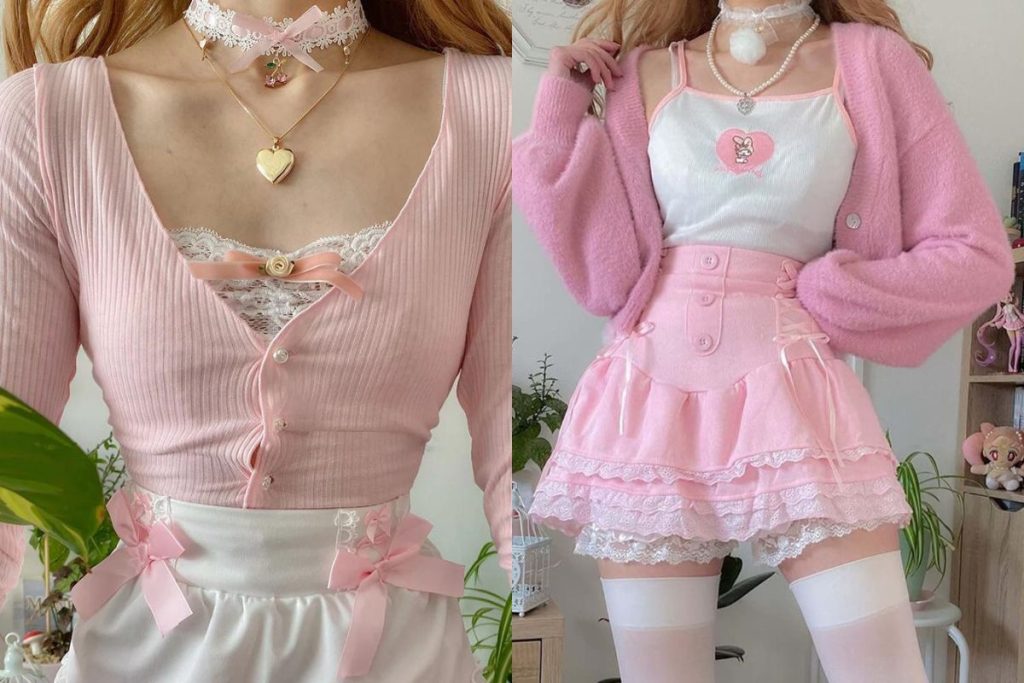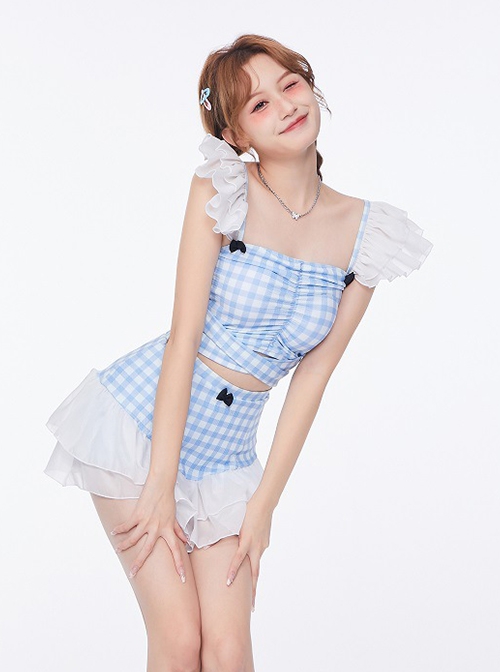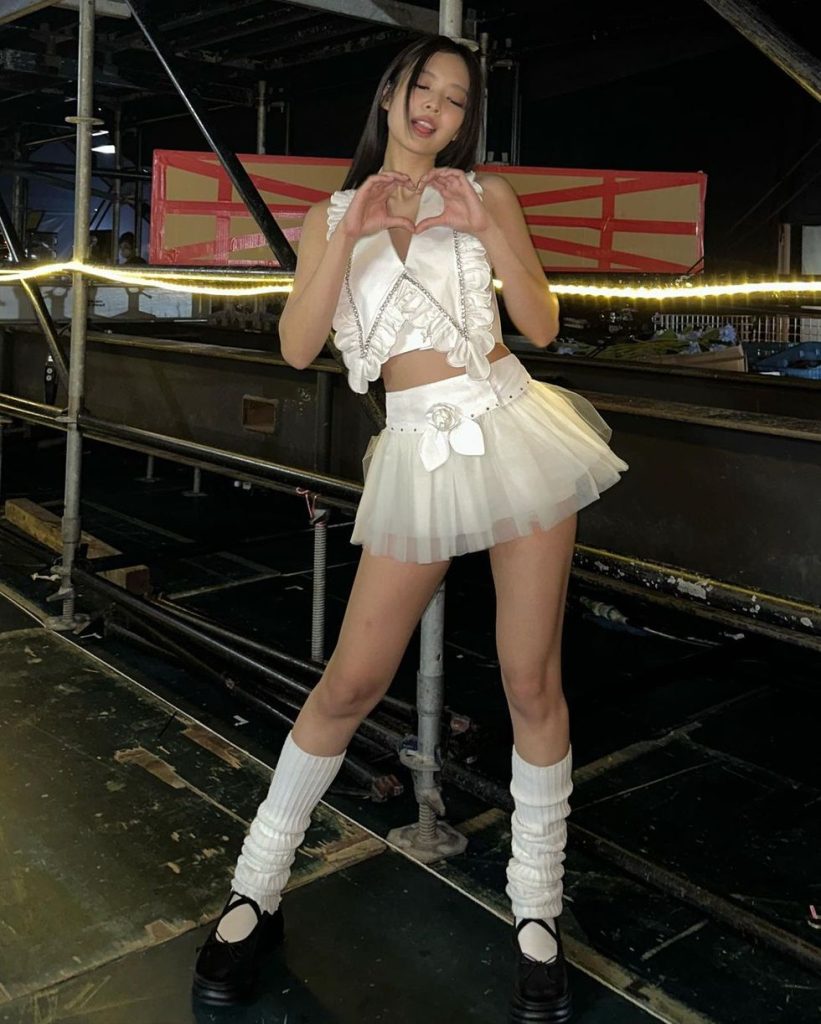Origins of Coquette Fashion: A Historical Perspective
The Birth of Coquette Style in the Rococo Era
The term “coquette” finds its roots in the indulgent halls of 18th-century French society where dressing played a key part in a woman’s allure. Famed for its opulence and decorative art, the Rococo period saw women’s fashion become a canvas for flirtation and expression. With elaborate gowns, accented with lace, ribbons, and florals, the coquette’s wardrobe was crafted to captivate and enchant. These garments, rich in detail and bursting with femininity, were as much a part of the coquette’s arsenal as her witty banter and playful demeanor.
Transition to Subtlety in Victorian and Edwardian Fashion
As society embraced more conservative values, the coquette’s attire followed suit, moving towards more subdued yet still enticing designs. The Victorian and Edwardian eras shifted the coquette’s strategy to subtlety: high necklines and long skirts dominated, yet they were tailored to accentuate the waist and hips with corsetry and structured silhouettes. Hats, gloves, and parasols became the subtle tools for coy flirtation. Laced with nuanced details, such as a suggestive glance from beneath a wide-brimmed hat, fashion remained a key player in the reserved coquette’s subtle game of charm.

The Modern Coquette: Empowerment Through Dress in Contemporary Times
In contemporary fashion, the concept of the coquette has evolved well beyond its historical undertones to embody empowerment and individuality. Today’s coquette might choose a figure-hugging dress or a pair of high-waisted pants that exude confidence, paired with elements of traditional femininity like sheer fabrics or strategic cutouts. Modern coquettish style is not about conforming to a singular standard of attraction but about mixing elements of surprise, sophistication, and self-expression. The modern coquette uses fashion as a statement of both her autonomy and her allure.
The Essence of Coquetry in Modern Attire: Subtlety and Statement
The Language of Lace and Delicate Fabrics
Lace has long been the hallmark of the coquette’s wardrobe, a fabric that suggests rather than reveals. Its interplay with visibility is a metaphor for the coquette herself, who reveals her intentions and desires gradually. Delicate fabrics like silk and chiffon also speak the language of coquetry, offering a soft allure and gentle suggestion of what lies beneath. The choice of fabric in a coquette’s attire is a careful gambit, a balance between overt sensuality and understated elegance.
Accessorizing the Coquette: Jewelry, Bags, and Shoes
The coquette knows the power of the perfect accessory. A strand of pearls, a delicate bracelet, or a suggestive anklet can turn a simple outfit into a sartorial statement of seduction. Accessories can serve as talking points, items that catch the light and invite closer inspection, or playful pieces that suggest a carefree spirit. Bags and shoes complete the coquette’s ensemble, with heels clicking assertively and clutches that demand a delicate hold. Each detail is chosen with care, reflecting the coquette’s knack for non-verbal communication through fashion.

Color and Print: The Coquette’s Palette of Seduction
Colors and prints play a crucial role in the sartorial choices of the coquette. A burst of red can convey passion, while a hint of pink might suggest innocence and playfulness. Prints too can flirt on behalf of the wearer; a floral pattern might throw back to the archetype’s roots, or bold stripes and polka dots can signal a more modern, assertive form of allure. The coquette uses color and print to subtly communicate mood and intention, allowing her attire to speak for her before she utters a single word.
The Coquette’s Influence on Fashion Trends and Pop Culture
Coquettish Icons: The Legacy of Fashion Influencers
Throughout history, certain figures have embodied the essence of coquetry and influenced fashion trends with their distinctive styles. From Marie Antoinette’s opulent Rococo dresses to the flappers of the 1920s with their shorter hemlines and free-spirited attitude, these icons have made their mark on coquettish fashion. Contemporary style icons continue this legacy, often borrowing elements from past coquettes to create a new, modern interpretation that resonates with today’s fashion enthusiasts.
The Runway and the Coquette: High Fashion’s Flirtation
The flirtatious spirit of the coquette frequently makes its way onto the high fashion runways. Designers, inspired by the allure of the coquette, integrate elements such as feathers, frills, and sheer panels into thei
collections. They play with silhouettes that emphasize movement and mystery, allowing the garments to whisper secrets as they move. These designs often become the talk of fashion weeks, highlighting the enduring appeal of coquettish charm in the high-octane world of fashion. Season after season, collections reinterpret the coquette’s allure, proving that flirtation and playfulness are eternal sources of inspiration in the ever-evolving narrative of fashion.

Coquettishness in Media and Pop Culture: The Femme Fatale to Girl-Next-Door
The portrayal of coquettish characters in film, television, and literature has significantly influenced societal perceptions of this archetypal figure. From the cunning femme fatale of noir cinema to the innocent allure of the girl-next-door, coquettes have been depicted in a spectrum of lights, often serving as the catalyst for the plot’s development. These characters have shaped the archetype’s evolution, seamlessly blending traditional coquettish traits with contemporary values, embodying independence, strategic intellect, and sexuality on their own terms. As media continues to explore and expand the dimensions of the coquettish personality. It mirrors society’s shifting attitudes toward female autonomy and sexuality.
Empowerment Through Fashion: The Coquette’s Agency
At the heart of coquettish fashion lies a profound sense of empowerment. By selectively revealing and concealing, the coquette asserts control over her own image and the way she navigates the world. This sartorial agency is a powerful statement of autonomy, allowing women to explore and express their identities, desires, and complexities. In a world where women’s bodies are often subject to scrutiny and control. Coquettish fashion can serve as a form of resistance, a declaration that a woman’s allure is hers to wield as she sees fit.

The Complexity of the Coquette: Avoiding Simplification
While coquettish behavior and fashion offer avenues for empowerment, they also risk reinforcing narrow stereotypes if not navigated thoughtfully. The coquette is often simplified to a one-dimensional figure, her intentions and intelligence overshadowed by her sexuality. It’s crucial, then, to recognize the coquette as a complex, multifaceted archetype that can embody strength, wit, and agency. By embracing the full spectrum of what it means to be coquettish, the modern coquette can subvert traditional stereotypes. Showcasing that coquettishness is not just about allure but also about intelligence, creativity, and empowerment.

The Future of Coquettish Fashion: Inclusivity and Evolution
As society progresses, the future of coquettish fashion lies in its ability to evolve and embrace inclusivity. Moving beyond traditional gender norms and stereotypes, coquettish fashion can offer a broader canvas for expression that welcomes all identities. This evolution involves not only the styles and designs that constitute coquettish fashion but also the attitudes and perceptions surrounding it. By fostering an environment where coquettishness is viewed as an empowering form of self-expression rather than a restrictive role to play. Fashion can amplify the voices of all who find joy and power in the art of subtlety and flirtation.
